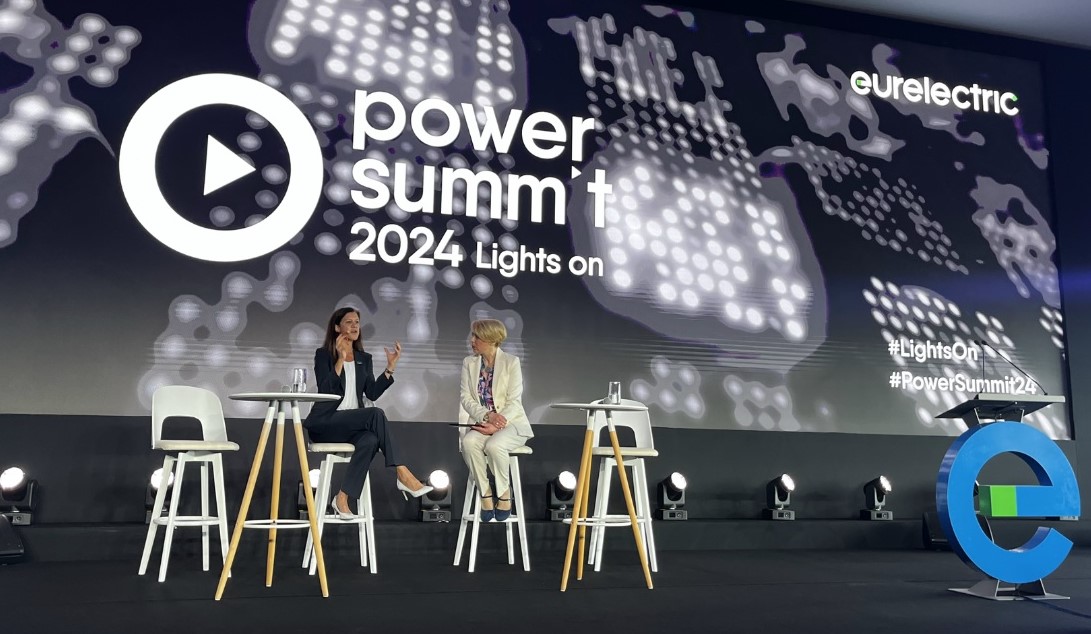I was honored to discuss GE Vernova’s commitment to electrify and decarbonize the world at Eurelectric’s Power Summit 2024 on May 22–23 in Athens, Greece.
GE Vernova is investing $1 billion this year to innovate solutions that meet growing demand and reduce our carbon footprint. Our objective is to deploy breakthrough technologies, alongside the tried and tested ones. However, the speed at which we move will be determined by the collaboration between the public and private sectors. That was my main message at the Power Summit.
The European Union stands at a crucial juncture in its quest for a sustainable future, driven by electrification and a commitment to expanding wind, solar, nuclear, hydroelectric, and hydrogen solutions while decarbonizing dispatchable “on demand” gas-fired power equipment, improving overall system efficiency, and ensuring energy security. This transition poses significant challenges for Europe’s power industry, which must balance long-term sustainability with near-term energy needs, as well as master the accompanying financial, technological, and regulatory hurdles.
To succeed in this mission, Kristian Ruby, secretary general of Eurelectric, emphasized three critical “I’s” during this year’s Power Summit: implementation, investment, and infrastructure. At GE Vernova, we propose adding a fourth: innovation.
These components together form a comprehensive strategy for balancing the energy transition with immediate requirements. This transition is akin to previous industrial, automotive, and digital revolutions.

Implementation: The Backbone of Policy and Regulation
The EU has been at the forefront of climate and energy transition policies. Effective implementation of these policies is essential for driving electrification across the continent. Clear, enforceable acts must ensure consistency and stability between member states. Policymakers need to adopt a comprehensive approach that includes all technologies that can reduce CO2 emissions, from natural gas to wind, from hydro to nuclear. Equally critical is the investment in new technologies and infrastructure to ensure a smooth and economically viable energy transition for all stakeholders.
Investment: Mobilizing Financial Resources
Electrifying Europe’s energy system requires unprecedented investment from both the public and private sectors. As part of its Action Plan for Grids, the European Commission estimates that the Union will need to secure 584 billion euros ($627 billion) in investments in the electricity grid by 2030. The EU has allocated significant public funds, for example, through the REPowerEU plan, which earmarks almost 40% of its 672.5-billion-euro ($721.6 billion) budget for climate action.
Public-private partnerships can drive large-scale projects like offshore wind farms and hydrogen infrastructure. The EU estimates that reaching the Fit for 55 reduction targets will require more than 1 trillion euros ($1.073 trillion) in investments between 2021 and 2030. Creating the right conditions and incentives will encourage financial institutions and investors to align their portfolios with green energy projects, and we believe that the proposed completion of the capital markets union will be a very promising step in that direction, unlocking additional funds for electrification and energy transition.
Infrastructure: Scaling Up for the Future
Transitioning to an electrified energy system necessitates overhauling the EU’s energy infrastructure. Existing grids must be modernized to accommodate a decentralized and diversified energy mix. This includes integrating renewable energy sources as well as building new transmission and distribution networks to connect remote installations to urban centers. Investing in smart grid technologies will enhance efficiency, reliability, and security. Developing energy storage solutions, such as advanced batteries, and deploying more pumped hydro storage are essential for managing supply and demand fluctuations.
In addition, research indicates that extreme weather events have caused more than 145 billion euros ($155 billion) in economic losses across the EU over the past decade. To improve infrastructure resilience, efforts should focus on physical hardening of networks, additional water spill gates for hydropower, resizing thermal and nuclear plant cooling systems, and deploying advanced digital tools for grid management.
Innovation: The Catalyst for Sustainable Solutions
Innovation drives the electrification of the EU’s energy system. Investing in research and development is crucial for discovering and commercializing new technologies. Examples include direct air capture (DAC), carbon capture, utilization, and storage (CCUS), and small modular reactors (SMRs). These technologies, along with gas turbines and hydrogen retrofitting technologies, are essential for achieving climate neutrality by 2050.
Companies like GE Vernova already invest approximately $1 billion annually in researching innovative technologies. Accelerating the development and deployment of these innovations is critical.
From the ‘Energy Trilemma’ to the ‘Four I’s‘ Opportunity
The EU’s electrification project requires increased coordination between the areas of policy, finance, infrastructure, and innovation. By focusing on these four I’s — implementation, investment, infrastructure, and innovation — we can effectively tackle the challenges and deliver on this transition. Embracing a diversified energy mix and modernizing the grid will achieve climate goals and ensure energy security and economic resilience.
Collaboration and partnership throughout the continent are vital. Private and public sectors must join forces to deliver on this ambition, as there is no alternative. The EU can lead the global charge toward a sustainable future, ensuring a successful energy transition while maintaining economic stability and growth.
